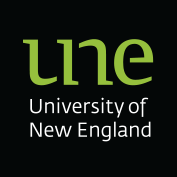Aboriginal and Torres Strait Islander readers be advised that this article contains discussion and an image of a deceased individual.
The following is a piece written by UNE staff member Dr Kerith Power in the memory of Dianne Roberts. Dr Roberts, a Thunghutti woman, completed a Master’s in Early Childhood Education at UNE and later became one of the first Aboriginal people to receive an honorary doctorate from the university. Dianne was an immensely important member of the UNE community and the university mourns this loss.
When I first met Dianne twenty-five years ago, she had already become a successful educational leader, having started as the youngest of thirteen children in a family of leaders. Dianne had the capacity to attract support from all comers to her vision of inclusive education. From the basis of a fourth grade primary education and an expectation that she was destined to remain a domestic worker, she rose above these beginnings to become a qualified teacher and inspire many people to discover and develop their own potential. As one of a group of non-Aboriginal Friends of Minimbah, I was lucky to be one of these people.
On my first visit Dianne gave me a badge that said “I am an Australian for reconciliation”. This touched me deeply because like many people of my generation I was ignorant of Australia’s Black history. In my work in Lismore and Ballina as a community worker I had come across Aboriginal colleagues and service users who were suspicious and angry towards me because they had been patronised and mistreated by non-Aboriginal people and mainstream institutions all their lives. I wanted to help but did not know my own attitudes got in the way. Dianne gently educated me in how to behave by yarning to me about some other white person who talked too much and tried to take over. After repeatedly hearing these yarns I gradually became a more respectful and better listener. I came to help but stayed to learn.
Dianne employed me as a project worker at Minimbah. Dianne had the ideas and the credibility and I did the paperwork. In those two years we were funded to over a million dollars by government departments, charitable organisations and individuals, to cover the running expenses, expand the preschool and build the new primary school. Eventually Dianne was running an Aboriginal administered school with eight qualified Aboriginal staff drawn from different family and language groups, and about 100 children.
When I began working at UNE I continued collaborating with Dianne. We successfully tendered to the Federal Government to provide support services to 20 Indigenous preschools in Northern NSW. In 1999 Dianne initiated and led the first Aboriginal led ‘Partnerships: Participation, Perspectives and People’ conference at UNE facilitated by Helen Edwards and myself. In the year 2000 Dianne and I travelled together to Canada where we stayed with the Hobbema community in Saskatchewan. Together we celebrated Cathy Freeman’s gold medal in the Olympics. Dianne travelled on alone to New York where she spent her birthday on the top of the Empire State building. She subsequently adapted Canadian First Nations models for school strategic planning and for a state funded Family Literacy program.

Dr Kerith Power and Dr Dianne Roberts
I asked Dianne and the Minimbah staff if I could study leadership at Minimbah for my PhD project. They graciously agreed to this and Dianne emphasised to me the importance of ‘knowing the community in which you are working’. I hung out at Minimbah and yarned with everyone there over three years of research and writing. Dianne presented papers with me annually at the Australian Association for Research in Education conference over those years and in the year 2000 was invited to be the keynote speaker on Teachers’ Day in Melbourne. After her speech the Maori educators in the audience spontaneously rose to their feet and sang to her in tribute to her oratory.
Among the many collaborations following completion of my PhD, two professional events stand out for me. One was gaining a grant from the Federal Department of Labour and Industry with Tony Abbot as the Minister, to assist Aboriginal preschool teachers to take time out from their jobs, families and communities to come on campus to complete their assignments and get University teacher qualifications. In that way we fostered and attended the successful graduations of five Aboriginal teachers at Bachelor level and one Dianne Roberts M.Ed.
The second was a unit of study I developed in the Bachelor of Education Early Childhood degree at UNE, based on Dianne’s principle of ‘knowing the community in which you are working’. This unit of study required every student teacher in the course to identify their local Aboriginal country, language groups and organisations and inform themselves about Aboriginal people’s lives. I requested both Dianne and Lyn Riley Mundine to review and comment on this in order to make sure correct cultural protocols applied. This unit was later incorporated into the B.Ed (Primary) at Charles Sturt University.
Dianne Roberts accompanied me to the Myall Creek commemoration in the year 2000, walked with me along the fourteen path markers where Aboriginal high school students read out the inscriptions in language. On that day I felt that one woman with a big laugh, a big vision and a generous heart had helped me to travel some of the way towards understanding and respect. We remained friends long after I had left Armidale.
My best wishes go to Dianne’s children Dorothy and Frank, their children and grandchildren, to the Aboriginal community of Armidale and to the whole community for the loss of such a brilliant and important person from our lives.
– Kerith Power


Recent Comments